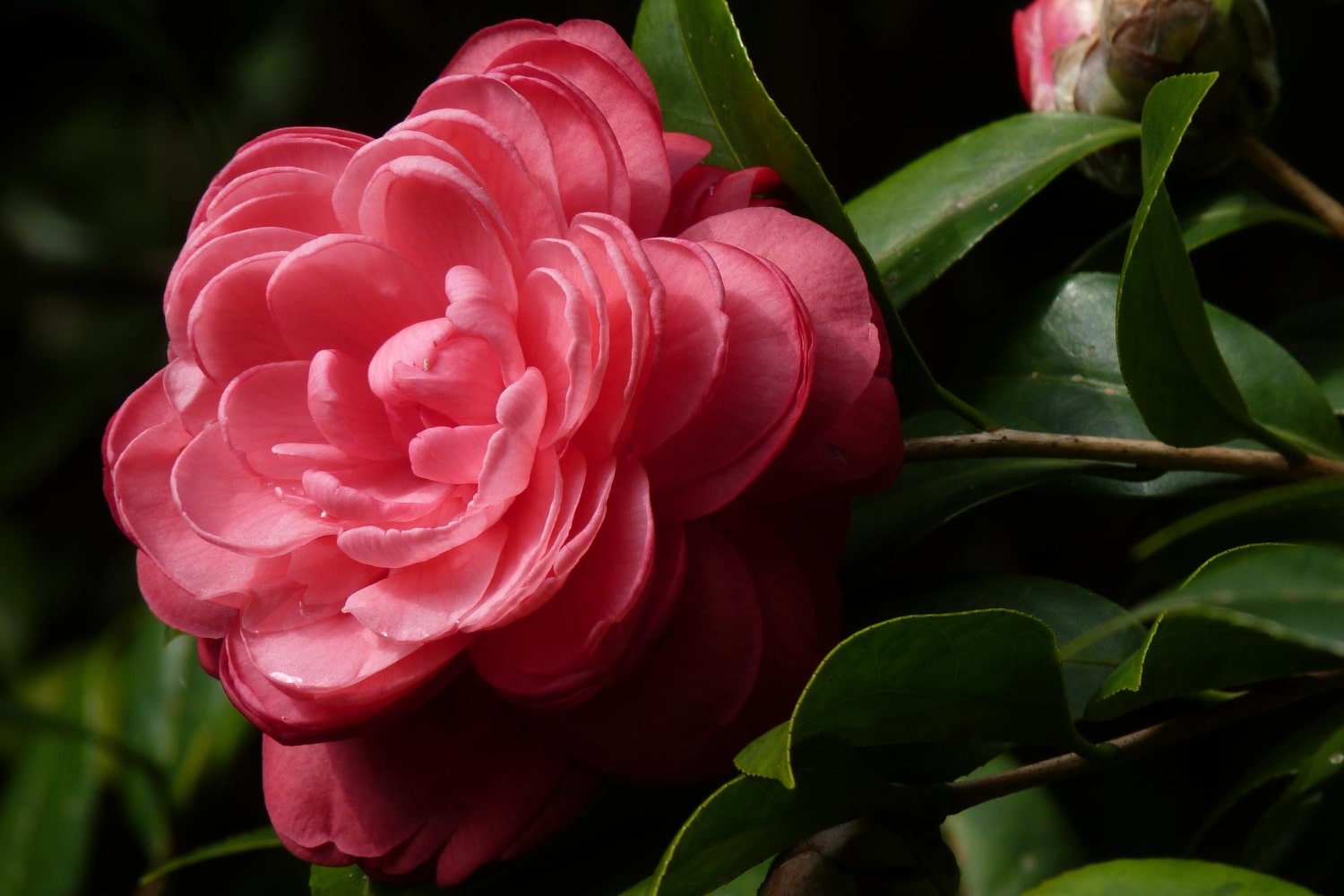Camellias are exquisite flowers that have fascinated people for centuries with their beauty, elegance, and symbolic meaning. Their glossy petals resemble porcelain, while their evergreen leaves keep their charm even in winter. The history of camellias is closely linked to the culture of the East, especially Japan and China, but over time they also won the hearts of Europeans. These interesting facts about camellias reveal not only their botanical features but also their artistic and cultural importance. Below are some fascinating facts you might not have known before.
- The camellia belongs to the tea family and is closely related to the tea plant. It is from the species Camellia sinensis that green, black, and white tea is produced and enjoyed all over the world. Thus, every cup of tea owes its existence to this beautiful flower.
- The camellia was named after the Jesuit missionary Joseph Kamel, who lived in the 17th century and studied the flora of the Philippines. Although he did not discover the plant himself, his research helped European botanists learn about it. In his honor, the flower was given the scientific name Camellia.
- Camellias originate from tropical and subtropical regions of East Asia, including China, Korea, Vietnam, and Japan. In the wild, they grow in mountainous forests with humid and mild climates. Today, there are more than 300 species of camellias and thousands of decorative varieties.
- In Japanese culture, the camellia, known as tsubaki, has long symbolized elegance, nobility, and purity. Its image can be found on traditional woodblock prints, textiles, and samurai crests. A white camellia represents sincerity, while a red one symbolizes love and devotion.
- In Chinese tradition, the camellia symbolizes eternal love and harmony between two people. Its petals are seen as the feminine element and its stamens as the masculine, making the flower a symbol of balance and unity. Because of this, camellias are often used in wedding decorations.
- In the 18th and 19th centuries, camellias became one of the favorite flowers of the French aristocracy. They became a symbol of sophistication thanks to Alexandre Dumas’ novel The Lady of the Camellias. After its publication, the white camellia became a fashionable accessory among the ladies of Parisian high society.
- Interestingly, camellias bloom in winter or early spring, when most plants are dormant. This makes them a symbol of hope, endurance, and vitality. In Japan, camellias are often used to decorate temples during winter celebrations.
- Camellias can live for a very long time — some specimens are over 200 years old. In ancient Japanese gardens, there are camellia trees planted during the Edo period that still bloom today. They are considered living monuments of history.
- Although camellia petals are delicate, the plant itself is hardy and resistant to cold. Some varieties can withstand temperatures as low as -10°C while remaining lush and green. This makes camellias unique among evergreen flowering plants.
- Camellias come in many colors — from pure white to deep red, pink, and even yellow. There are also bi-colored and striped varieties that look particularly striking. The double-flowered types, which resemble roses, are especially prized.
- The oil camellia (Camellia oleifera) is cultivated for its high-quality oil, extracted from its seeds. This oil is used in cooking, cosmetics, and medicine. Rich in antioxidants and vitamin E, camellia oil nourishes and protects the skin.
- Despite their refined appearance, camellias have little to no fragrance. This makes them suitable for indoor decoration, as their scent is not overwhelming. For this reason, camellias have become popular houseplants in many countries.
- One of the most distinctive traits of the camellia is that its blossoms fall whole instead of losing their petals gradually. Because of this, in Japan, the flower was seen as a symbol of the fleeting nature of life. At the same time, this quality gave it a meaning of dignity and graceful passing.
- Camellias play an important role in floral art. They are often used in bouquets, garlands, and wedding arrangements. Their shiny petals look like silk and add a touch of refinement to any composition.
- In China, the camellia is known as the “flower of the empress.” It was grown in imperial gardens during the Tang and Ming dynasties. It was believed to bring good luck and protect against misfortune.
- In modern cosmetology, camellia extract is a valuable ingredient in creams, masks, and shampoos. It has moisturizing, rejuvenating, and antioxidant properties. Camellia oil is also used for hair care, leaving it smooth, shiny, and healthy.
- The camellia is considered one of the most structurally complex flowers in the plant world. Its petals are arranged in perfect symmetry, and its leaves have a waxy coating that protects them from moisture. These features have made the camellia a symbol of natural perfection.
- Different camellia varieties bloom at different times of the year. Some begin in autumn, while others flower in January or February. This variety allows gardens to remain beautiful and colorful throughout the winter.
- The camellia is the official flower of Japan’s Nagasaki Prefecture. Every year, a camellia festival is held there, showcasing hundreds of varieties of this plant. Locals regard it as a symbol of peace, beauty, and harmony.
- In ikebana, the Japanese art of flower arrangement, the camellia holds a special place. It represents spiritual purity and inner calm. Its simplicity and natural grace make it ideal for meditative floral compositions.
Camellias embody elegance, harmony, and the perfection of nature. These interesting facts show that this flower has not only ornamental value but also profound cultural significance that bridges East and West. For centuries, camellias have inspired artists, poets, and gardeners around the world. After learning these fascinating facts, you might view this flower with even greater admiration and affection.





